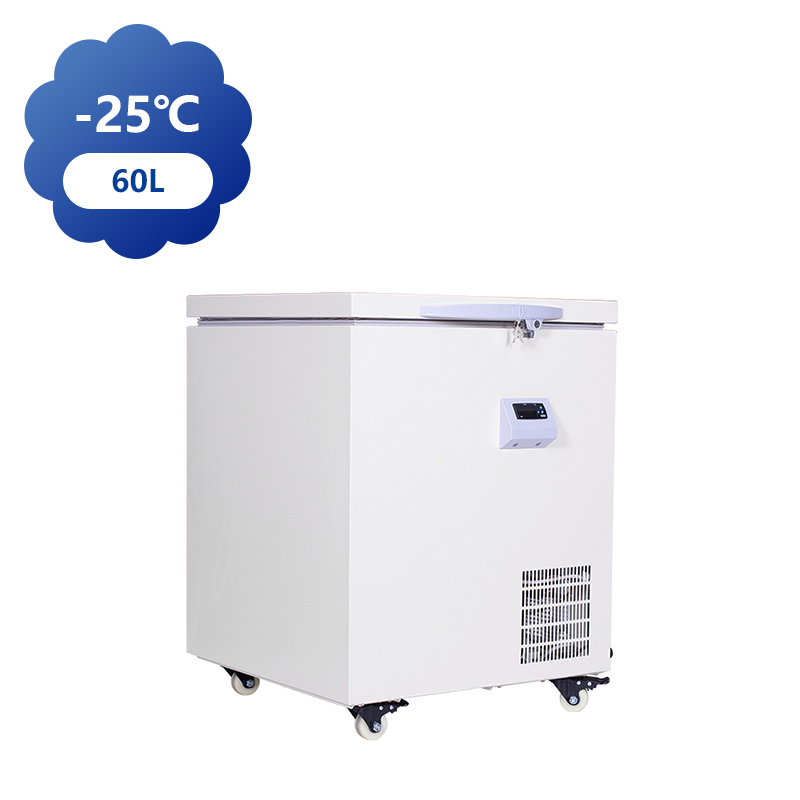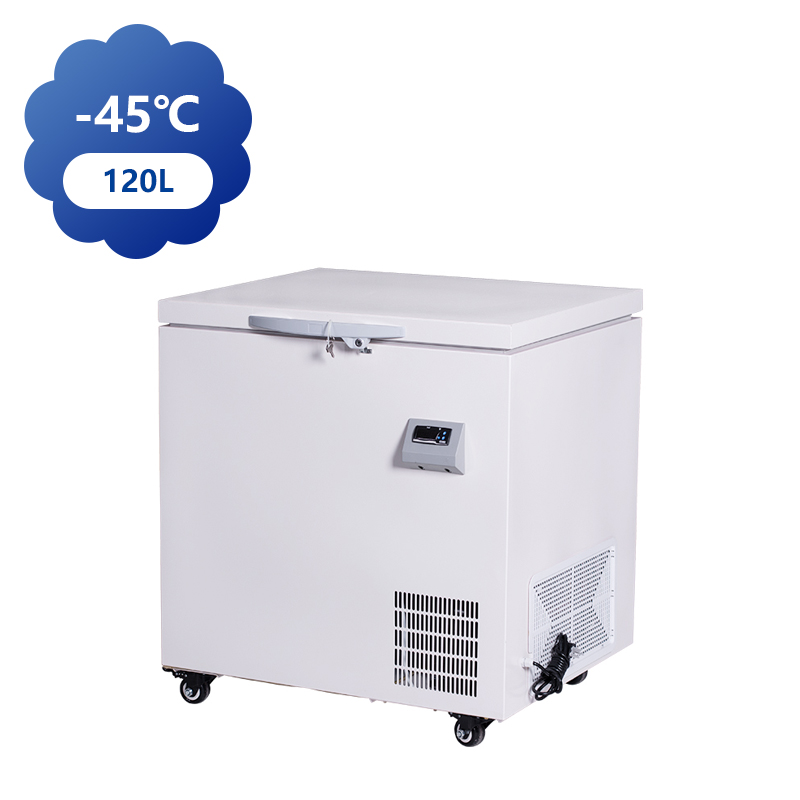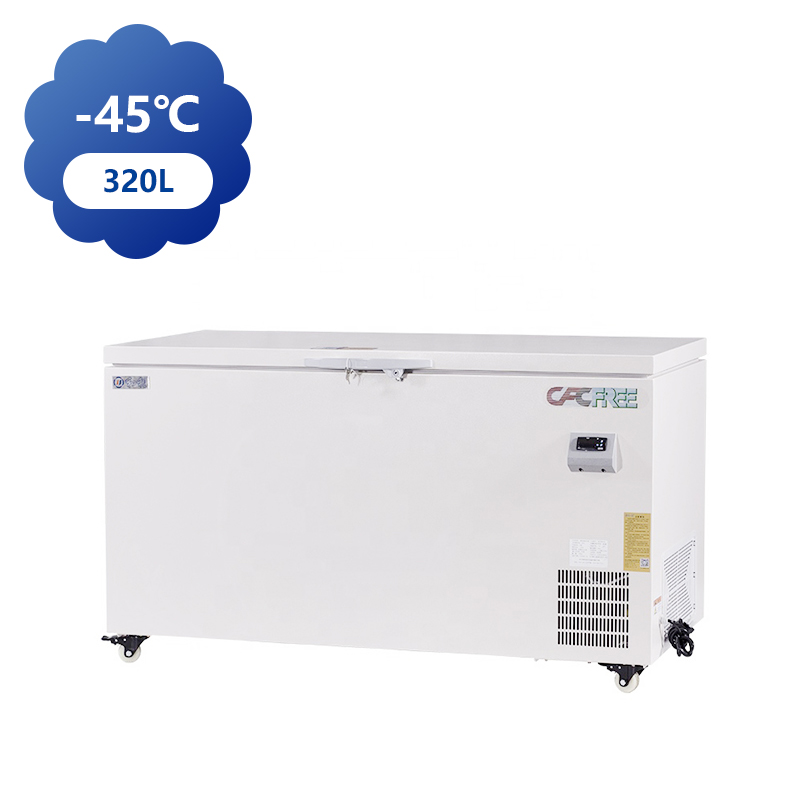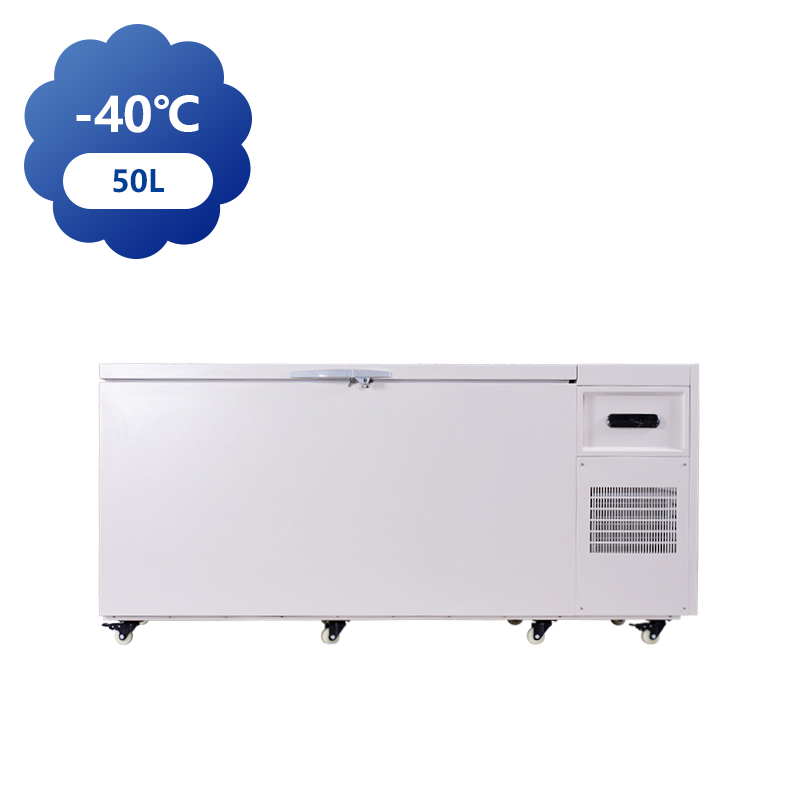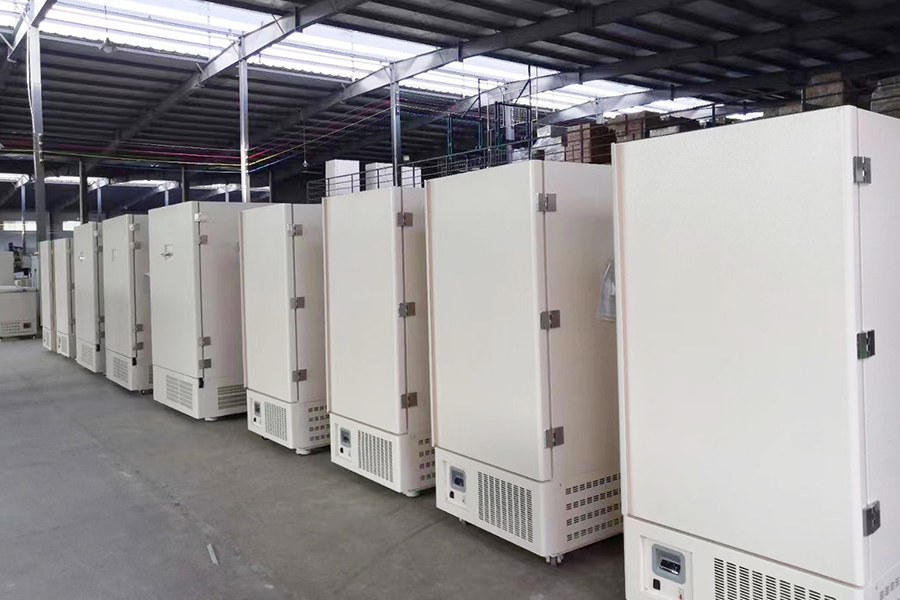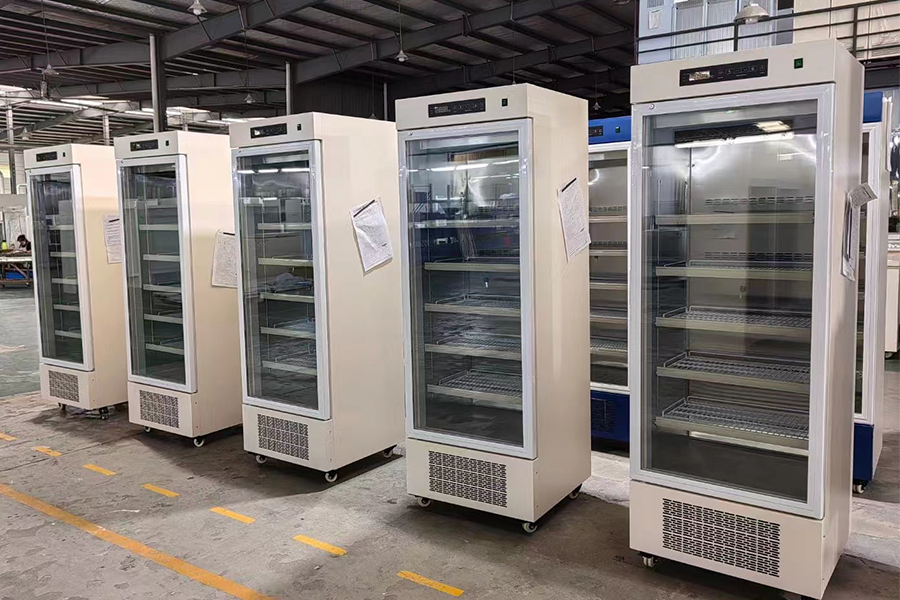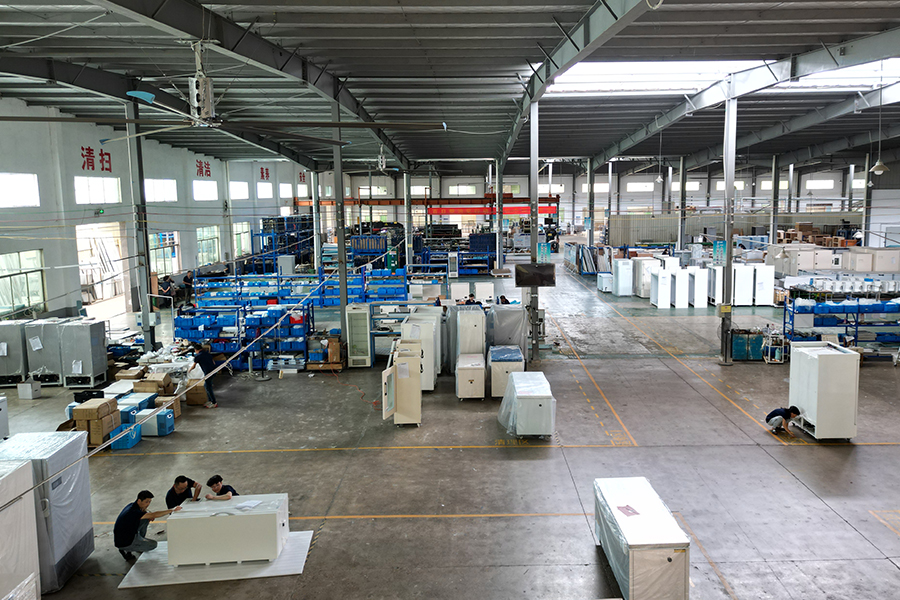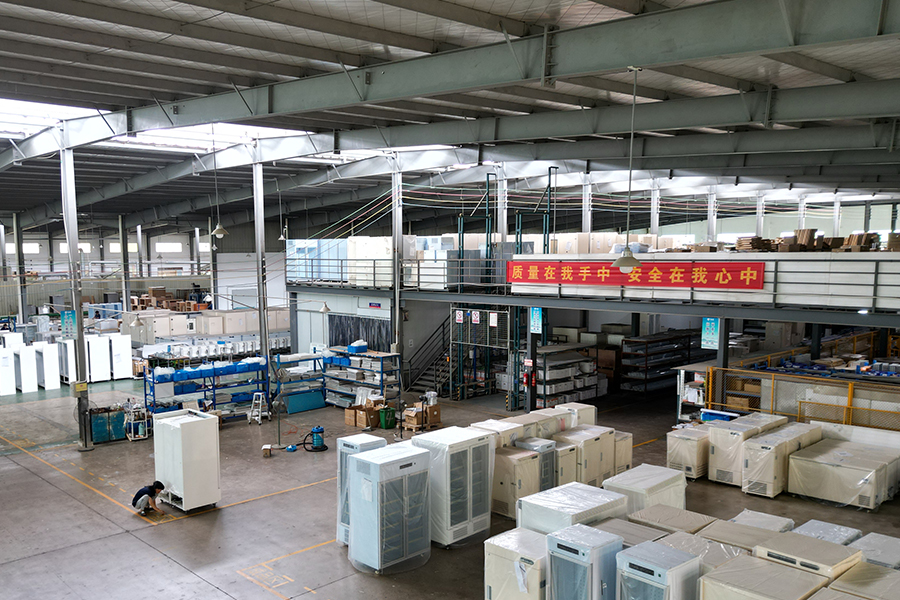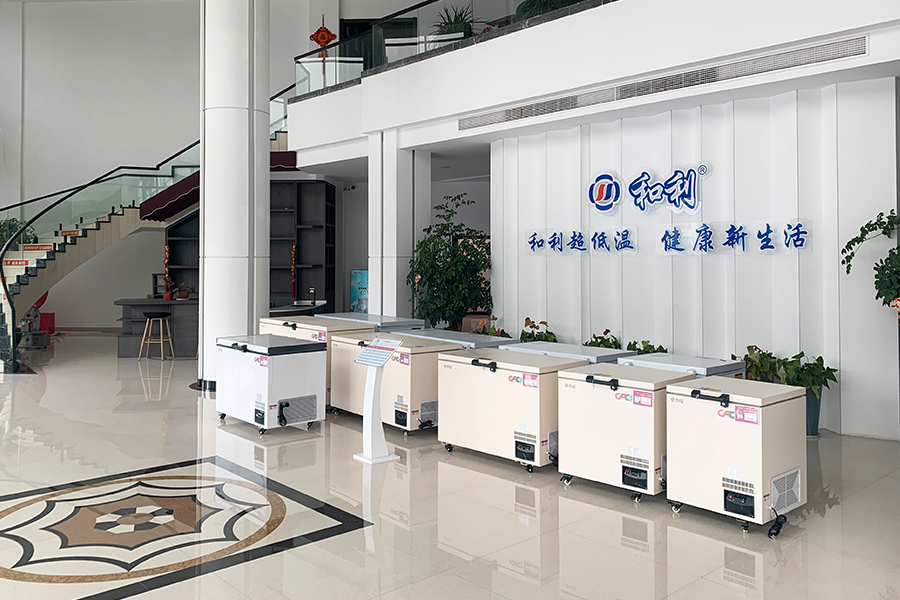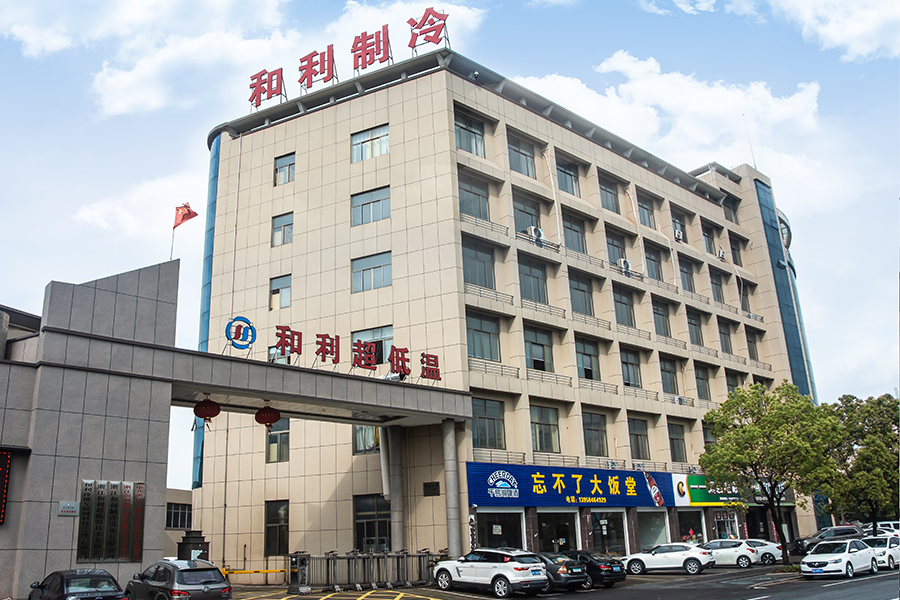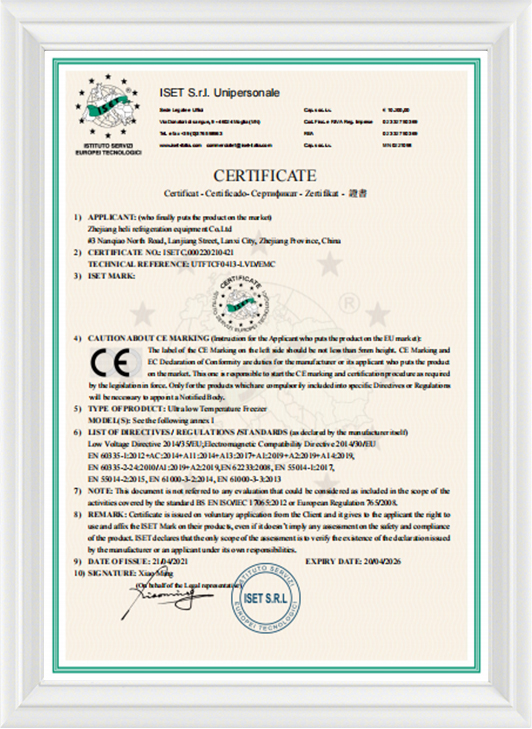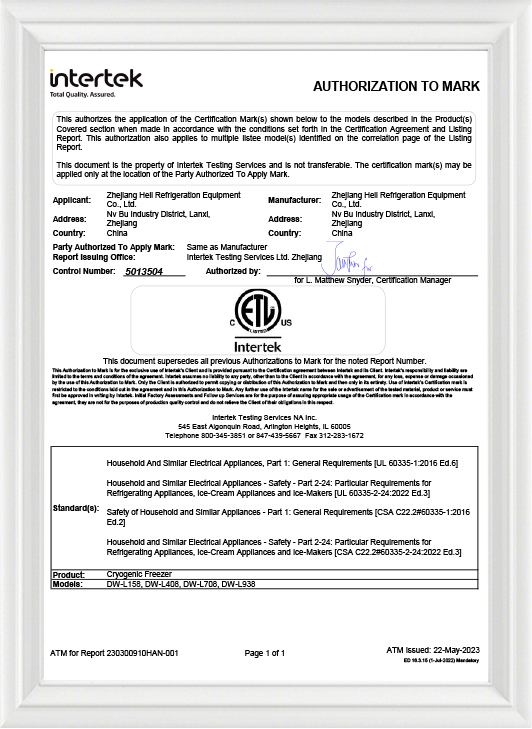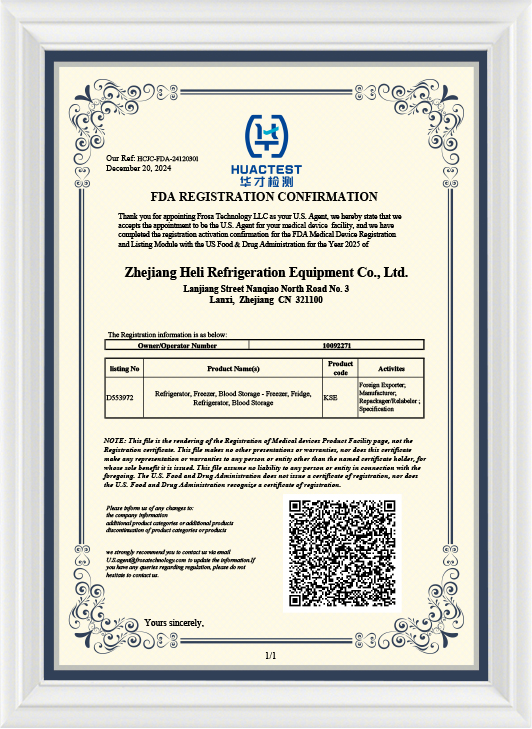A cryogenic medical refrigerator is a specialized refrigeration unit designed to preserve biological samples, vaccines, pharmaceutical products, and medical materials at ultra-low temperatures. These units ensure product stability, prevent degradation, and maintain the integrity of sensitive samples over long periods.
-25/-45 ℃ Horizontal Low Temperature Freezer Company
1. Ideal for samples, vaccines, reagents, and biological materials
2. Digital temperature display and alarm system
3. Stores vaccines, reagents, biological samples
Zhejiang Heli Refrigeration Equipment Co., Ltd. owns a 25,000-square-meter modern industrial park, featuring a scientific layout and comprehensive functions. The company has established a full-chain industrial system covering technological R&D to finished product inspection, which provides a solid guarantee for the high-quality production of ultra-low temperature refrigeration equipment.
-
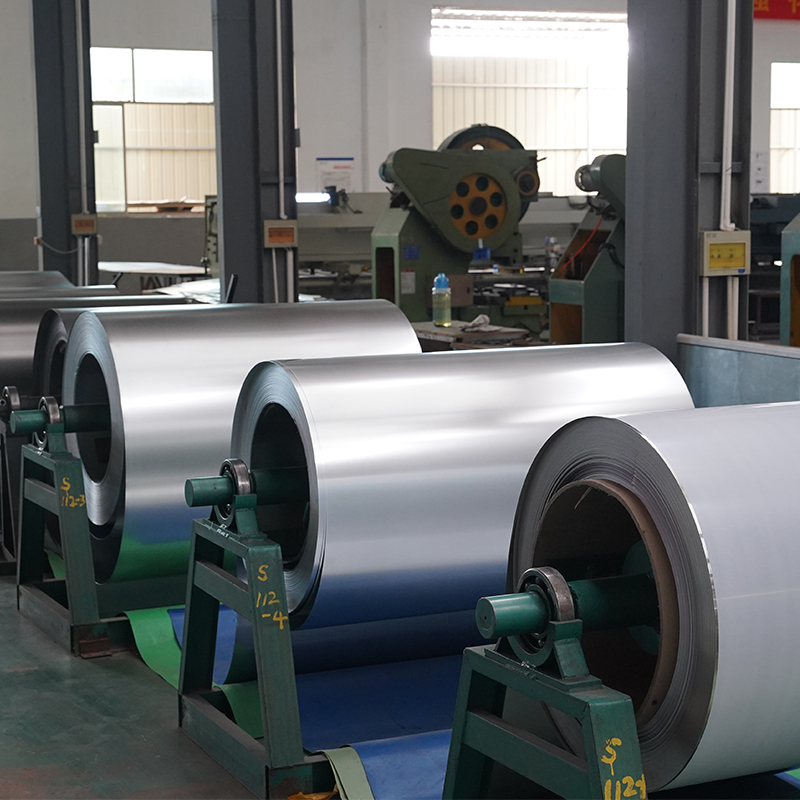 High quality raw materials
High quality raw materialsWe use high-quality raw materials, which are reliable and durable in quality.
-
 OEM/ODM
OEM/ODMWe have a professional R&D team that can design products according to different needs.
-
 Rich experience
Rich experienceWe have a professional technical team that can improve the process based on the different characteristics of the products to extend their service life.
-
 Quality inspection
Quality inspectionThe quality inspection room is equipped with advanced quality inspection devices. Before each refrigerator is dispatched, it needs to undergo various tests to ensure its stability and reliability.
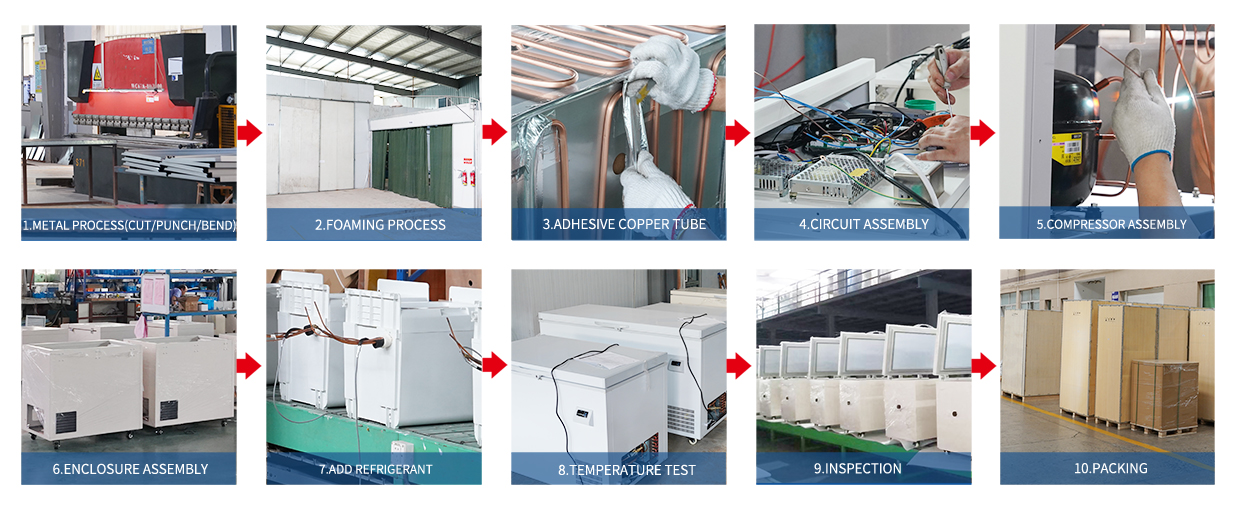
Q. 1. What is a cryogenic medical refrigerator?
Q. 2. What temperature ranges do your refrigerators cover?
Our product line includes models with various temperature capabilities:
•Pharmaceutical refrigerators: +2°C to +8°C
•Low-temperature freezers: down to –45°C or –60°C
•Ultra-low temperature freezers: –86°C
•Cryogenic freezers: as low as –150°CQ. 3. What safety and quality certifications do your refrigerators have?
Our products are manufactured in accordance with international standards and can be supplied with certifications such as FDA CE, ISO 13485, and ISO 9001. Each unit undergoes rigorous performance testing, quality inspection, and temperature calibration before delivery.
Q. 4. How do you ensure temperature accuracy and reliability?
Each model is equipped with a high-precision digital temperature control system, real-time monitoring sensors, and audible/visual alarm functions to detect temperature deviations. Optional data logging and remote monitoring systems are available for enhanced safety and traceability.
Q. 5. Can the refrigerators be customized to meet specific requirements?
Yes. We offer customization options for capacity, interior configuration, voltage, and monitoring systems. Custom branding, data interfaces, and alternative refrigerants (environmentally friendly options) can also be provided upon request.
Q. 6. Do you provide international shipping and after-sales service?
Yes. We export globally and work with logistics partners experienced in handling precision laboratory equipment. Our technical team provides remote support, spare parts, and professional guidance for installation and maintenance.
Q. 7. What are the maintenance requirements for cryogenic refrigerators?
Routine maintenance includes cleaning condenser filters, verifying temperature uniformity, and periodically checking door seals. Our after-sales team can provide maintenance guidelines and technical training for your staff to ensure optimal performance and longevity.
Q. 8. How can I choose the right model for my application?
Our sales engineers will assist you in evaluating your storage requirements — such as temperature range, sample volume, installation space, and power configuration — to recommend the most suitable model for your application.
Q. 9. Do you work with distributors or OEM partners?
Yes. We welcome collaboration with qualified distributors and OEM partners worldwide. We provide full technical support, marketing materials, and training to help our partners serve their markets effectively.
-
In sectors like healthcare and food delivery, maintaining ultra-low temperature conditions during transport is essential. Whether you're carrying vaccines, biol...
READ MORE -
When transporting temperature-sensitive materials—be they biological samples, pharmaceuticals, or premium perishables—a combination of ULT Car Freezer and ULT P...
READ MORE -
When choosing a portable freezing solution, users frequently compare ULT car freezers (mounted or integrated into vehicles) versus standalone ULT portable freez...
READ MORE -
The transportation of perishable goods requires precision, especially when it comes to temperature control. In the last years, ULT car freezer has gained signif...
READ MORE
Production Inspection of -25℃/-45℃ Horizontal Low Temperature Freezer
The production inspection process of -25℃/-45℃ horizontal low-temperature freezers is a vital step in ensuring that these units perform at their meet industry standards. Since these freezers are often used to store temperature-sensitive materials, even small defects can compromise their effectiveness, so thorough inspection and testing are necessary. Key steps in the production inspection process include:
Visual Inspection:
The step in the production inspection process involves a detailed visual examination of the freezer's exterior and internal components. The goal is to identify any visible defects, such as scratches, dents, or signs of wear on the casing, doors, and seals. The freezer should also be checked for correct assembly and to ensure that all parts are in place and functioning as intended. Proper door sealing is especially important in horizontal freezers, as it minimizes the loss of cold air and enhances energy efficiency.
Temperature Control Testing:
One of the critical aspects of a -25℃/-45℃ horizontal low-temperature freezer is its ability to maintain the desired temperature consistently. During production, each unit undergoes rigorous temperature testing to verify that it can reach and sustain the required low temperatures. This testing typically involves running the freezer in a controlled environment for several hours to ensure that it can maintain a stable temperature range, even during prolonged operation. Temperature probes and sensors are used to monitor temperature variations inside the unit, ensuring compliance with industry standards.
Compressor and Refrigeration System Check:
The refrigeration system, which includes the compressor, condenser, and evaporator, is another crucial part of the inspection process. The compressor is responsible for circulating the refrigerant through the system to maintain the low temperatures. During inspection, technicians evaluate the performance of the compressor, checking for efficiency, sound levels, and any signs of malfunction. Additionally, the refrigerant system is tested for leaks to ensure there is no loss of refrigerant, which could bring about poor cooling performance.
Compressor Types of Ultra Low Deep Chest Freezers
Ultra-low deep chest freezers, particularly those designed for temperatures as low as -45℃, -60℃, or even -86℃, are critical for applications where storing sensitive biological or pharmaceutical materials is necessary. The compressor is a central component of these freezers, responsible for circulating the refrigerant and maintaining the low temperatures. Understanding the different types of compressors used in ultra-low deep chest freezers is key to selecting the right unit for specific needs. The two primary types of compressors used in these units are reciprocating compressors and rotary compressors.
Reciprocating Compressors:
Reciprocating compressors are one of the commonly used types of compressors in ultra-low deep chest freezers. They are known for their reliability and ability to generate higher pressures, which is essential for achieving the low temperatures required in deep freezing applications. In this type of compressor, a piston moves back and forth within a cylinder to compress the refrigerant gas. As the piston moves, the refrigerant is drawn in, compressed, and then expelled into the condenser.
Advantages:
High pressure capability: Reciprocating compressors are well-suited for ultra-low temperatures because they can maintain the high pressure needed to circulate refrigerants effectively.
Durability: These compressors are robust and can withstand heavy use over long periods, making them ideal for commercial and industrial-grade freezers.
Efficiency at low temperatures: Reciprocating compressors are particularly efficient at maintaining the very low temperatures required in deep freezing applications.
Disadvantages:
Noise: One of the drawbacks of reciprocating compressors is that they tend to be noisier than other compressor types due to the mechanical movement of the piston.
Vibration: The piston's back-and-forth motion can cause vibrations, which may bring about additional wear and tear over time.
Rotary Compressors:
Rotary compressors, while less common than reciprocating compressors in ultra-low freezers, are increasingly being used in certain applications due to their quiet operation and energy efficiency. These compressors use a rotating mechanism to compress the refrigerant. The compressor contains a rotary element, such as a vane or roller, which moves around a central shaft to compress the gas.



 中文简体
中文简体 English
English Français
Français عربى
عربى